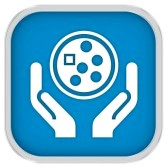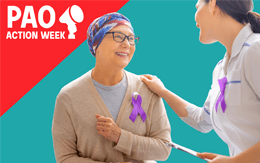 The last decade has brought a variety of innovative cancer treatment options to the market. A 2009 study conducted by PhRMA compiled a list of 129 medications in development to treat Leukemia, 122 to treat lung cancer, and 106 to treat breast cancer[1]. The number of oncology patients has steadily grown over the last decade, but several drugs are prescribed for a majority of cancer patients. The top five cancer medications yielded $10.03 billion of sales in 2012 to approximately 800,000 patients[2]. However, despite all of the research that has been conducted in the field of oncology, there is a growing need for cancer treatment globally. A recent PhRMA study estimates that there will be 68,000 new cancer patients in the United States in 2014[3].
The last decade has brought a variety of innovative cancer treatment options to the market. A 2009 study conducted by PhRMA compiled a list of 129 medications in development to treat Leukemia, 122 to treat lung cancer, and 106 to treat breast cancer[1]. The number of oncology patients has steadily grown over the last decade, but several drugs are prescribed for a majority of cancer patients. The top five cancer medications yielded $10.03 billion of sales in 2012 to approximately 800,000 patients[2]. However, despite all of the research that has been conducted in the field of oncology, there is a growing need for cancer treatment globally. A recent PhRMA study estimates that there will be 68,000 new cancer patients in the United States in 2014[3].
The rise in the number of cancer patients in the United States has driven the development of a variety of treatment options, which are becoming increasingly complex and target very specific types of cancer. As a result, the cost of cancer treatment has been skyrocketing alongside general healthcare costs. In 2000, healthcare expenditures accounted for 13.6% of the GDP in the United States, which is expected to rise to 20% by 2018[4]. Furthermore, increased reliance on government funding for cancer treatment has strained public healthcare funding. In 2012, 60% of cancer patients were covered by Medicare and Medicaid, and only 31% were covered by private healthcare plans[5].
Forbes estimates that $5 billion in research and development costs are required to develop a new medication[6]. This number is inflated by the fact that a majority of drugs in development are not brought to the market due to safety concerns, but the complexity of developing novel drugs for cancer treatment has made the research and development process even more difficult. Additionally, pharmaceutical manufacturers are forced to spend more money than ever before to promote their medications and stand out from similar drugs. In the oncology market, it is estimated that 24.4% of each dollar of sales is spent on marketing and education for the drug, compared to the 13.4% that goes towards research and development[7].
There are a growing number of voices who question the sustainability of the oncology market if these trends continue, but an increasing number of pharmaceutical companies are incorporating KOLs into most of their medical education programs to make their marketing efforts more efficient. Although consumers are more educated than ever about treatment options for cancer, oncologists are still the authority in choosing which medications are best for each patient. For this reason, pharmaceutical manufacturers have found that educating health care professionals about their products through KOLs is the most effective and efficient way to promote their medications and improve the quality of patient care that physicians provide for cancer patients.
[1] 2009 Report, Medicines in Development for Cancer, PhRMA, www.phrma.org, downloaded April 22, 2014
[2] Staton, T. (2012, May 15). Top 10 Best-selling Cancer Drugs. FiercePharma. Retrieved April 24, 2014, from http://www.fiercepharma.com/special-reports/top-10-best-selling-cancer-drugs/top-10-best-selling-cancer-drugs
[3] Staton, T. (2012, May 15). Top 10 Best-selling Cancer Drugs. FiercePharma. Retrieved April 24, 2014, from http://www.fiercepharma.com/special-reports/top-10-best-selling-cancer-drugs/top-10-best-selling-cancer-drugs
[4] Oncology Market Overview: Barriers, Challenges, and Value. (2011, March 9). Cancer Progress by Defined Health. Retrieved April 24, 2014, from http://www.cancerprogressbydh.com/
[5] Oncology Market Overview: Barriers, Challenges, and Value. (2011, March 9). Cancer Progress by Defined Health. Retrieved April 24, 2014, from http://www.cancerprogressbydh.com/
[6] Herper, M. (2013, August 11). The Cost Of Creating A New Drug Now $5 Billion, Pushing Big Pharma To Change. Forbes. Retrieved April 24, 2014, from http://www.forbes.com/sites/matthewherper/2013/08/11/how-the-staggering-cost-of-inventing-new-drugs-is-shaping-the-future-of-medicine/
[7] Oncology Market Overview: Barriers, Challenges, and Value. (2011, March 9). Cancer Progress by Defined Health. Retrieved April 24, 2014, from http://www.cancerprogressbydh.com/





